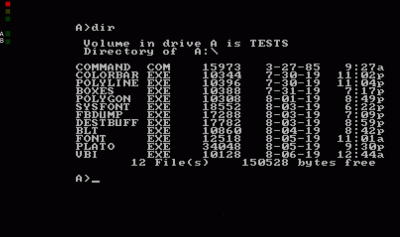First post, by tschak909
Hello everyone,
I've recently borrowed a Mindset computer, for the purpose of writing new software for it, and am writing it in Watcom C 1.9.
Currently set to generate 80186 instructions, with texan optimizations.
Thus far, I have brought up a copy of PLATOTERM on the system:
https://www.youtube.com/watch?v=e0VZveLqMoY
This uses polyline, polypoint, and a few other BLT functions to do output, and works okay....
However, I am trying to get BLT COPY from this document, to work properly:
http://www.bitsavers.org/pdf/mindset/Mindset_ … opers_Guide.pdf <-- page 4-43
And I've thus written so far:
https://gist.github.com/tschak909/75a7e9e6804 … 3019820e10c9c19
and all I see is a sea of blackness. argh It's something I am doing wrong.. wtf is it?
